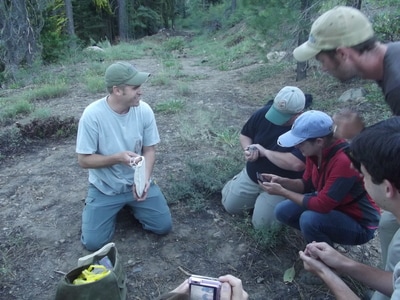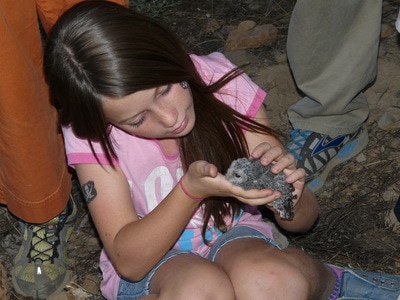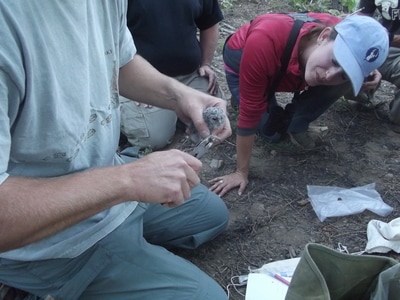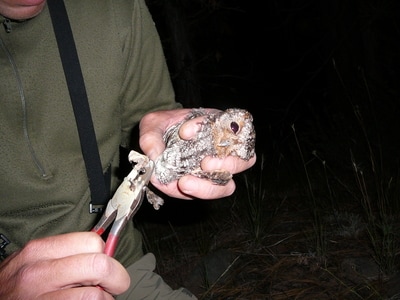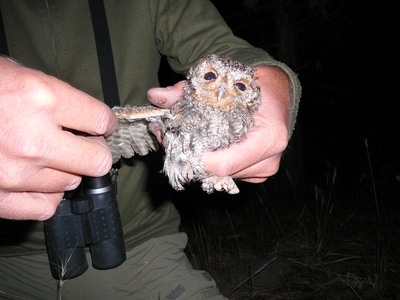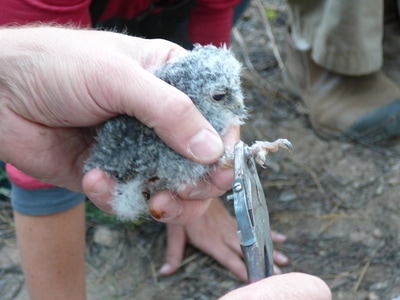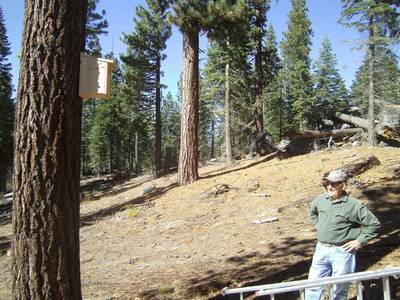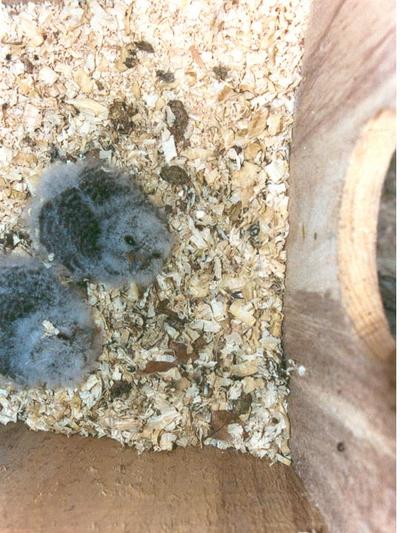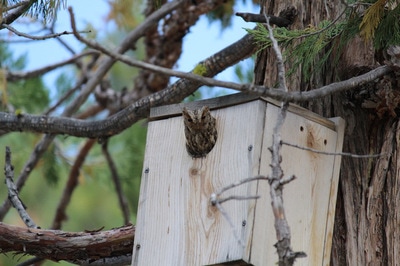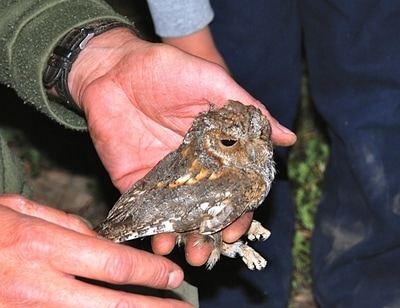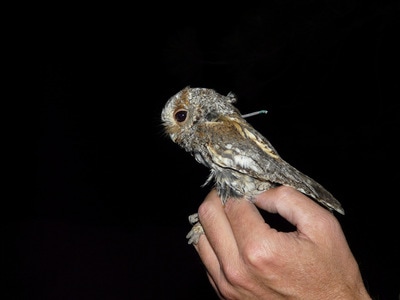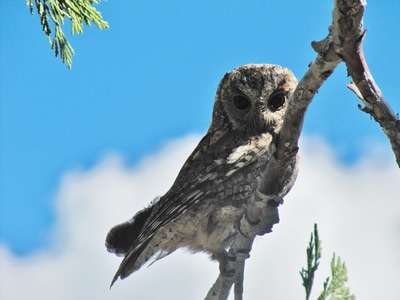Lake Davis Flammulated Owl Study
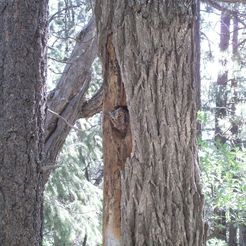
The Plumas Audubon Society initiated a study of Flammulated Owls around Lake Davis in 2012 in collaboration with the Plumas National Forest, Beckwourth Ranger District. The goal of the project is to facilitate the conservation of Flammulated Owls on national forests. The objectives are to study Flammulated Owl populations around Lake Davis, the largest and densest known population of this species in the northern Sierra Nevada, to determine: 1) their use of nest boxes; 2) the effect of forest management on their populations; and 3) the interaction between nest boxes and forest management and its application to conservation of this species.
Paired study areas provided an indication of differential use of similar habitats. Nest boxes were installed in many of the areas, with more still to be installed, to observe trends in owls preference of sites.
Defensible Fuel Profile Zones, or DFPZ's, are areas where thinning has or will take place. These areas have fewer cavities than unthinned areas and with nest boxes installed our hypothesis is owls will return to using those areas. Reducing fuel loads in the forests reduces our chances of a catastrophic forest fire. These projects can also have dramatic affects on wildlife species using the area. Flammulated owls have been shown to benefit from thinning, as they prefer open spaces for foraging; however, thinning also reduces the amount of snags and therefore nest cavities available.
Paired study areas provided an indication of differential use of similar habitats. Nest boxes were installed in many of the areas, with more still to be installed, to observe trends in owls preference of sites.
Defensible Fuel Profile Zones, or DFPZ's, are areas where thinning has or will take place. These areas have fewer cavities than unthinned areas and with nest boxes installed our hypothesis is owls will return to using those areas. Reducing fuel loads in the forests reduces our chances of a catastrophic forest fire. These projects can also have dramatic affects on wildlife species using the area. Flammulated owls have been shown to benefit from thinning, as they prefer open spaces for foraging; however, thinning also reduces the amount of snags and therefore nest cavities available.
Conservation
The Flammulated Owl is listed as a U.S. Fish and Wildlife Bird of Conservation Concern, a California Partners in Flight focal species, and a sensitive species in some national forest regions. Flammulated Owls are small, nocturnal, neo-tropical migrants that vocalize quietly and are rarely seen. Species-specific surveys are necessary to determine the distribution and abundance of this species.
Studies have shown a decline in cavity-nesting bird numbers following timber harvesting due to the loss of nesting cavities, but forest thinning creates open forests that Flammulated Owls prefer for foraging. Our objective is to determine how to balance these two habitat components to help conserve populations of the Flammulated Owl in the Sierra Nevada.
Studies have shown a decline in cavity-nesting bird numbers following timber harvesting due to the loss of nesting cavities, but forest thinning creates open forests that Flammulated Owls prefer for foraging. Our objective is to determine how to balance these two habitat components to help conserve populations of the Flammulated Owl in the Sierra Nevada.
Banding
Banding Flammulated Owls at nest sites contributes to our understanding of site and mate fidelity, life-span, and also dispersal and migration.
Nest Boxes
Nest boxes are not a substitute for natural habitat, but may help buffer impacts from forest management by temporarily increasing reproductive rates and improving territory quality.
The Future
The Plumas Audubon Society will continue the Lake Davis Flammulated Owl study for at least 5 years. Our efforts will benefit Flammulated Owls by better understanding their habitat needs and the potential effects of forest management practices. Nest boxes will help to temporarily improve territory quality and reproductive success, but only a long-term forest management vision can sustain and effectively conserve populations of Flammulated Owls and other cavity-nesting species on the Plumas National Forest and elsewhere.
Enjoy this short clip of Flammulated Owl adults and nestlings recorded at a FLOW tour in summer 2015 at Lake Davis:
Thank you Sidd R. for sharing your video!
Thank you Sidd R. for sharing your video!
|
|
